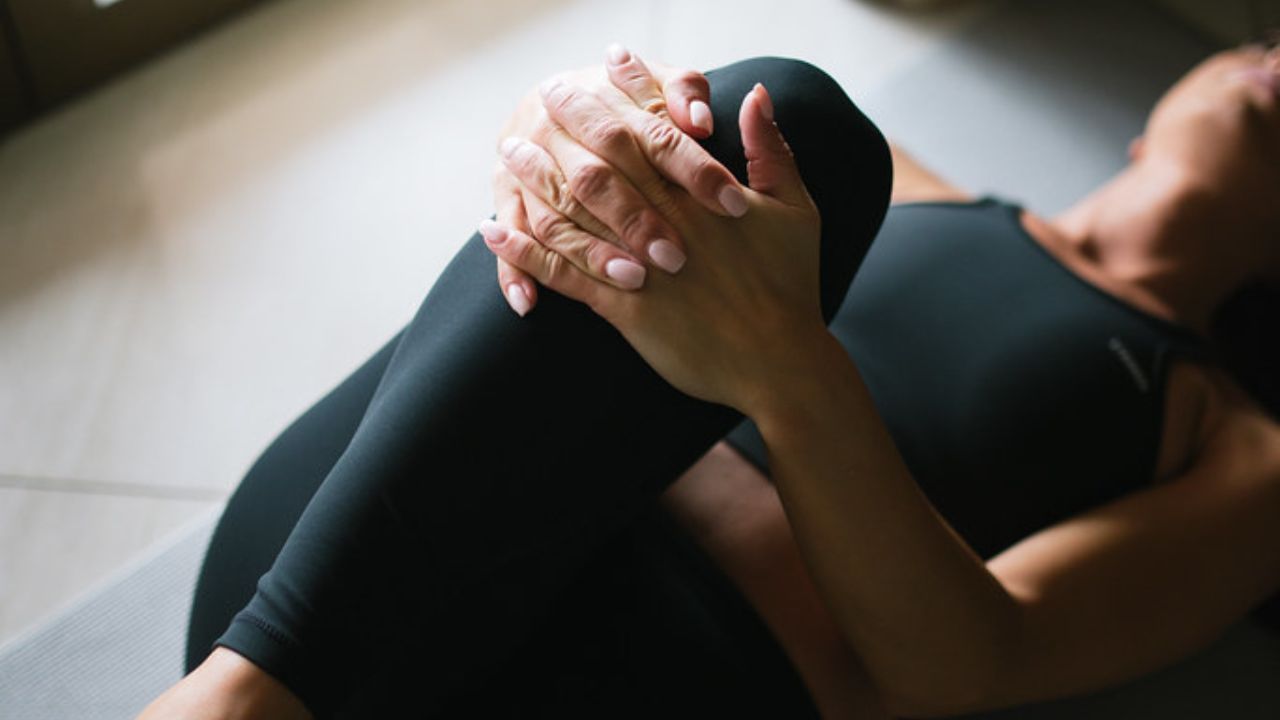
Are you ready to unleash your inner dancer and take your performance to the next level? Look no further!
In this comprehensive guide, we've got you covered with 10 must-do warm-up and stretches specifically designed for dancers. By incorporating these exercises into your routine, you'll not only improve your flexibility and range of motion but also enhance your balance, stability, and prevent injuries.
Get ready to dance with freedom and confidence!
Why Warm-Up and Stretching Are Important for Dancers
You should prioritize warming up and stretching before dancing because they help prevent injuries and improve performance.
The importance of injury prevention can't be overstated, especially for dancers who put their bodies through rigorous movements and demanding routines. Warming up increases blood flow to your muscles, making them more flexible and less prone to strains or tears. It also prepares your body for the physical demands of dancing, reducing the risk of muscle imbalances or joint misalignments.
Stretching, on the other hand, helps to lengthen and loosen your muscles, improving your range of motion and overall flexibility. This not only enhances your dancing technique but also reduces the likelihood of strains or sprains.
Incorporating a proper warm-up and stretching routine into your dance practice won't only minimize the risk of injury but also optimize your performance on the dance floor.
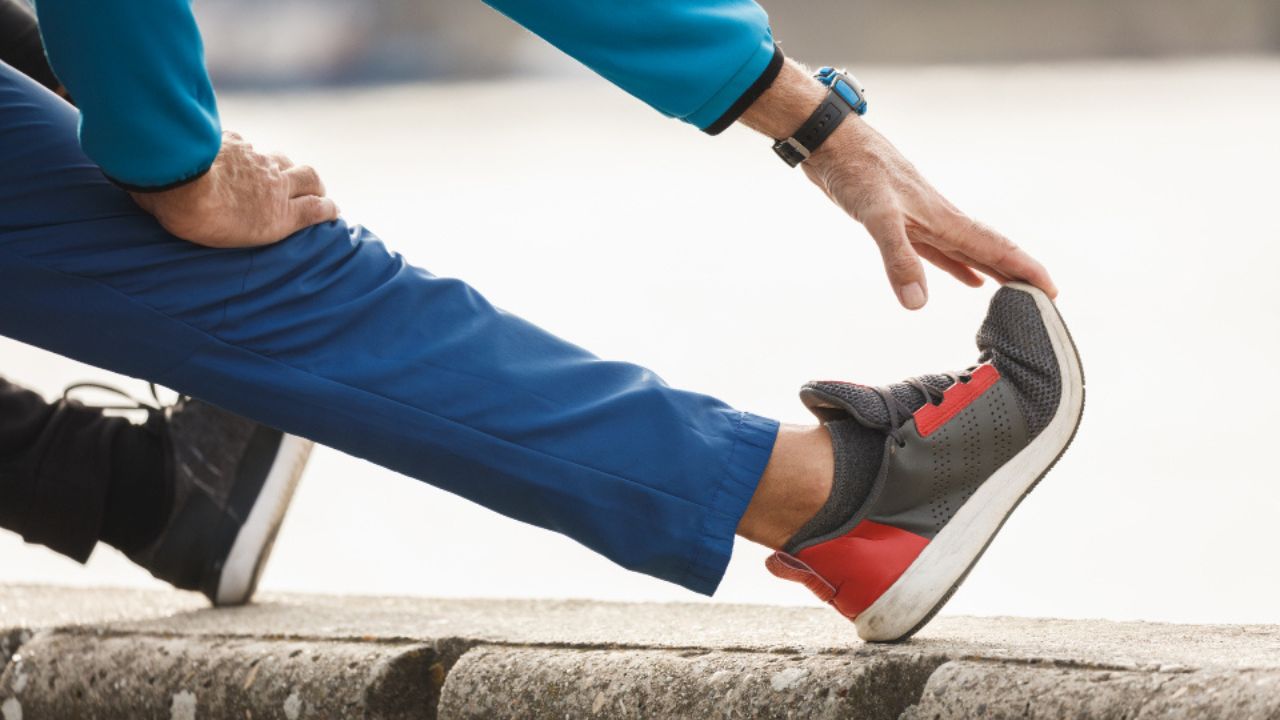
Dynamic Warm-Up Exercises for Dancers
Start your dance routine off right with a set of dynamic warm-up exercises that will prepare your body for the movements ahead. Dynamic warm-up exercises are an essential part of flexibility training for dancers. They help increase blood flow, improve joint mobility, and enhance muscle activation.
Here are four dynamic warm-up exercises that will get you ready to dance with freedom and confidence:
Leg swings: Stand beside a barre or wall and swing one leg forward and backward, focusing on keeping your core engaged and maintaining a straight posture.
Arm circles: Stand with your feet shoulder-width apart and extend your arms out to the sides. Make small circles with your arms, gradually increasing the size of the circles as you warm up.
Torso twists: Stand with your feet hip-width apart and place your hands on your hips. Slowly twist your torso from side to side, engaging your oblique muscles.
High knees: Stand tall with your feet hip-width apart. Lift one knee up towards your chest, then quickly switch to the other knee, keeping a brisk pace.
Incorporating these dynamic warm-up exercises into your dance routine will help improve your flexibility and prepare your body for the challenges ahead.
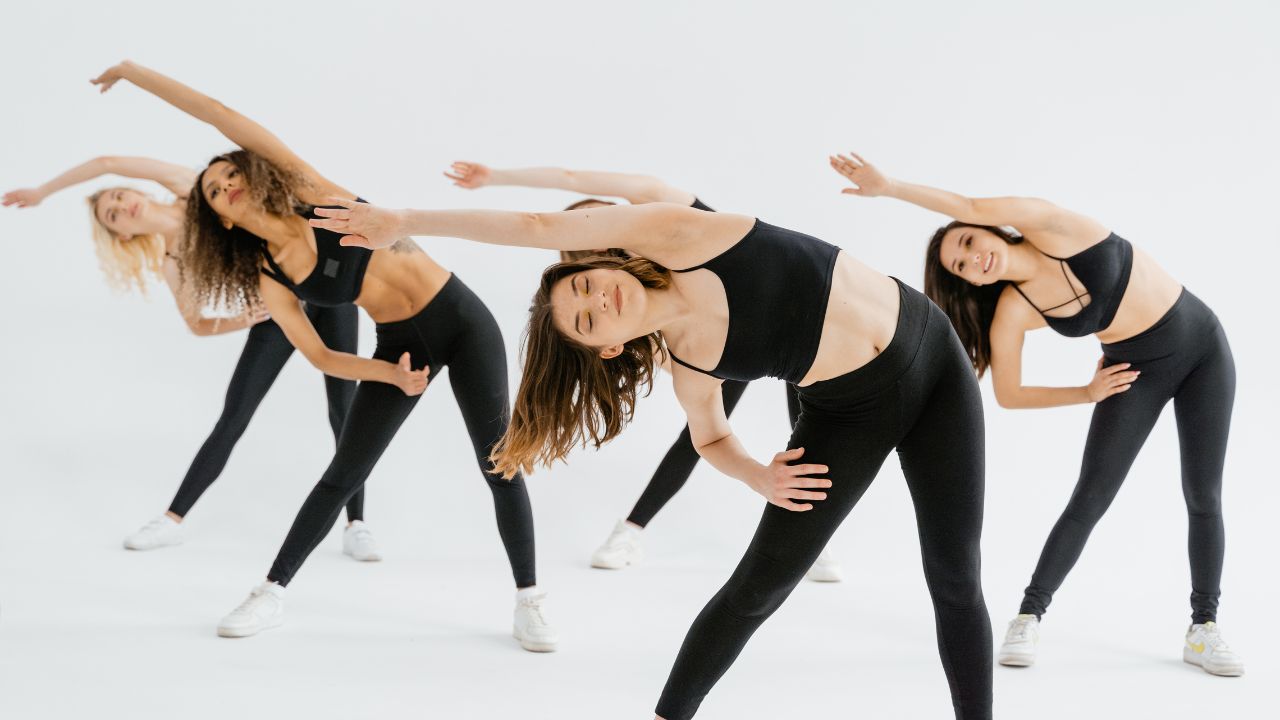
Stretching for Improved Flexibility and Range of Motion
To enhance your flexibility and range of motion, incorporate stretches that focus on lengthening and opening up your muscles and joints. Stretching is essential for dancers as it helps improve flexibility, allowing you to achieve a wider range of motion in your movements. When you stretch, your muscles and tendons become more pliable, making it easier to perform demanding dance routines and execute challenging dance positions.
By regularly stretching, you can gradually increase your flexibility and range of motion over time. It's important to stretch all major muscle groups, including the legs, hips, back, shoulders, and arms. Remember to hold each stretch for at least 30 seconds and breathe deeply to relax your muscles.
Stretching regularly won't only improve your dance performance but also prevent injuries and promote overall well-being. So, make stretching a part of your daily routine and enjoy the benefits of improved flexibility and increased range of motion.
Upper Body Warm-Up and Stretches for Dancers
During your warm-up, start by engaging in dynamic movements that activate and loosen up your upper body muscles. Then proceed to perform static stretches to further increase flexibility and prevent injury. The upper body plays a vital role in dance, so it's important to properly warm up and stretch these muscles before diving into your routine.
Here are some effective upper body warm-up exercises and stretches:
Arm circles: Stand with your feet hip-width apart and extend your arms out to the sides. Begin making small circles with your arms, gradually increasing the size of the circles. This exercise helps to warm up the shoulders, upper back, and chest.
Shoulder rolls: Stand with your feet hip-width apart and relax your arms by your sides. Slowly roll your shoulders forward in a circular motion, then reverse the direction. This helps to release tension in the shoulders and upper back.
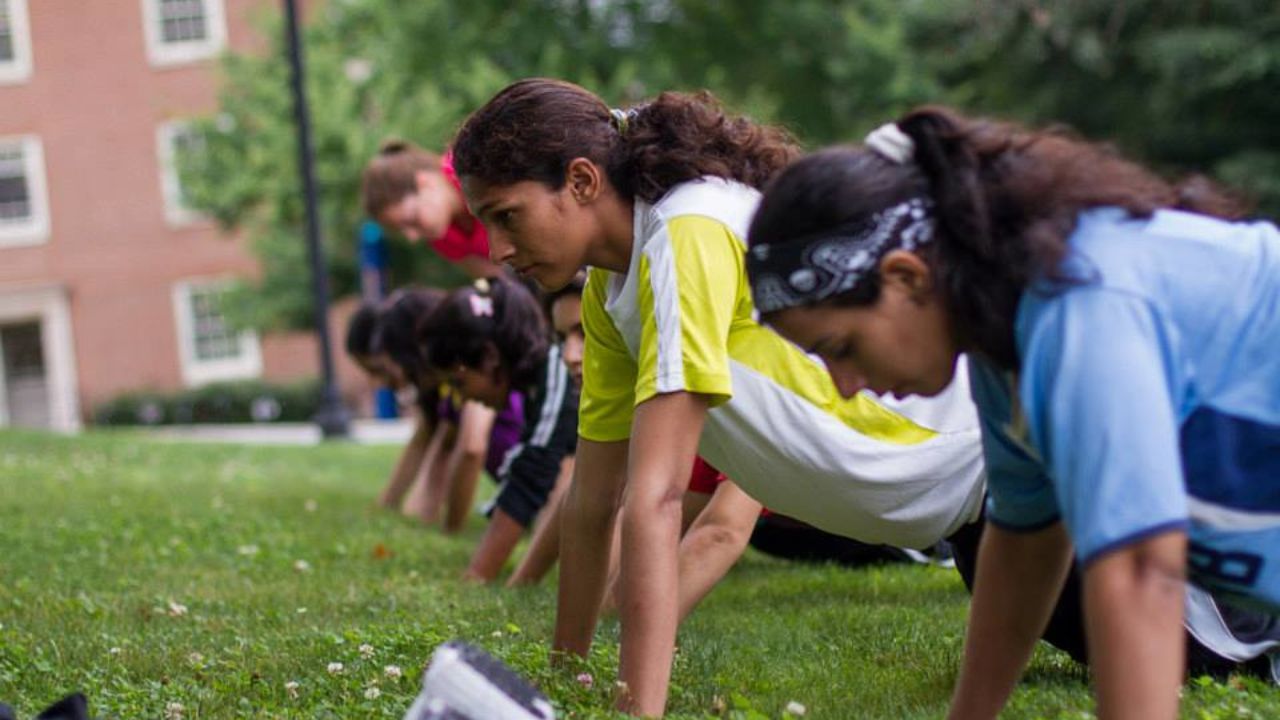
Cat-Cow stretch: Start on all fours with your hands directly under your shoulders and your knees under your hips. Inhale and arch your back, dropping your belly towards the floor (cow pose). Exhale and round your back, pressing your hands into the floor and tucking your chin towards your chest (cat pose). Repeat this movement to warm up and mobilize the spine.
Chest opener stretch: Stand tall and interlace your fingers behind your back. Gently straighten your arms and lift them away from your body, while simultaneously squeezing your shoulder blades together. This stretch targets the chest, shoulders, and upper back.
Remember to listen to your body and modify any exercises or stretches as needed. It's important to gradually increase the intensity of your warm-up and stretches to avoid injury. By properly warming up and stretching your upper body muscles, you'll improve your range of motion, enhance your performance, and dance with freedom and confidence.
Lower Body Warm-Up and Stretches for Dancers
To ensure optimal performance and prevent injuries, it's crucial for dancers to focus on warming up and stretching their lower body.
A strong and mobile hip joint is essential for executing various dance movements, which is why incorporating hip mobility exercises into your warm-up routine is vital.
Additionally, don't forget to include calf and ankle stretches to promote flexibility and prevent strain in these areas.
Hip Mobility Exercises
Start by incorporating hip circles into your warm-up routine to improve your hip mobility as a dancer. Hip mobility exercises are essential for increasing flexibility in dancers, allowing for greater range of motion and fluidity in movements. Here are some exercises to help you achieve that:
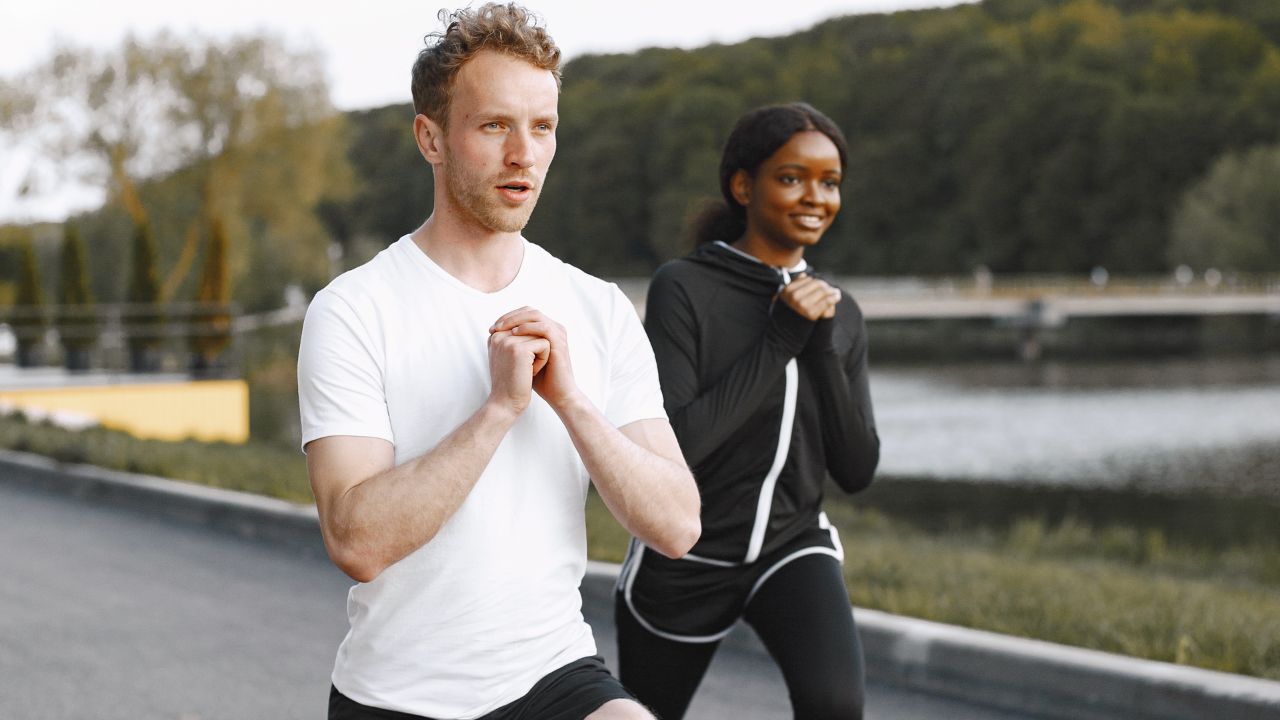
Hip circles: Stand with your feet shoulder-width apart and gently rotate your hips in a circular motion. Start with small circles and gradually increase the size as you warm up.
Hip openers: Stand with your feet together and place your hands on your hips. Slowly lift one leg to the side, keeping it straight, and then return it to the starting position. Repeat on the other side.
Butterfly stretch: Sit on the floor with the soles of your feet touching each other. Gently press your knees towards the floor to stretch your hip muscles.
Pigeon pose: Begin in a push-up position and bring your right knee forward, placing it behind your right wrist. Slide your left leg back and lower yourself onto your forearms. Hold this stretch and then switch sides.
Incorporating these hip mobility exercises into your warm-up routine will help you increase your flexibility as a dancer, allowing you to move with grace and ease.
Remember to listen to your body and never push yourself beyond your limits. Enjoy the freedom of movement!
Calf and Ankle Stretches
Make sure to include a few calf and ankle stretches in your warm-up routine to properly prepare your lower body for dancing. Calf stretches are essential for dancers because they help improve ankle strength and flexibility. One effective calf stretch is the wall stretch. Stand facing a wall with one foot in front of the other, keeping your back leg straight and your heel on the ground. Lean forward, placing your hands on the wall for support, and feel the stretch in your calf. Hold for 30 seconds and then switch legs.
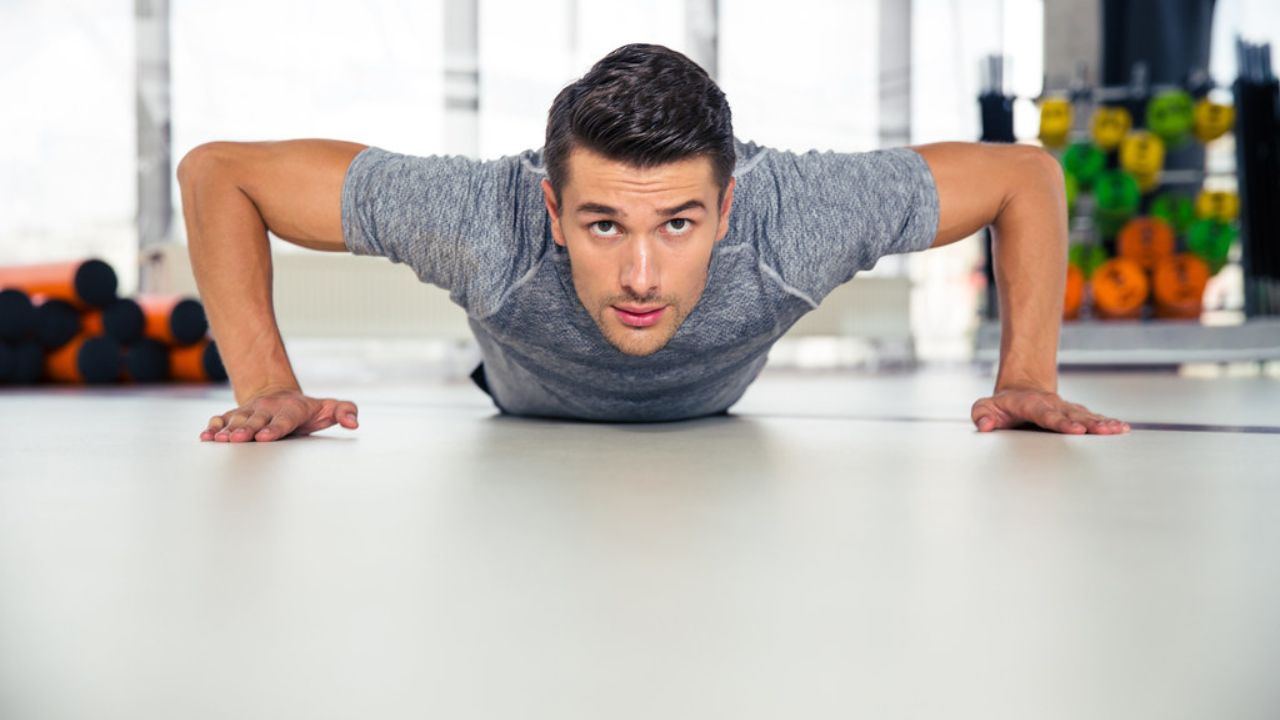
Ankle stretches are also important to prevent injuries and improve foot flexibility. One simple ankle stretch is the ankle circles. Sit on the floor with your legs extended and rotate your ankles in circles, both clockwise and counterclockwise.
Perform these stretches regularly to keep your calves and ankles strong and flexible for dancing.
Core Activation and Strengthening Exercises for Dancers
Get ready to engage your core and strengthen those abdominal muscles with these essential exercises for dancers. Your core is the powerhouse of your body and plays a crucial role in maintaining balance and stability during dance movements.
Here are four exercises that will help you activate and strengthen your core:
Plank: Start in a push-up position, with your hands directly under your shoulders and your body in a straight line. Engage your core and hold this position for 30 seconds to 1 minute.
Russian Twists: Sit on the floor with your knees bent and feet flat on the ground. Lean back slightly, lift your feet off the ground, and twist your torso from side to side, touching the floor on each side.
Pilates Roll-Ups: Lie flat on your back with your legs extended. Roll up one vertebra at a time, reaching your fingertips towards your toes. Roll back down with control.
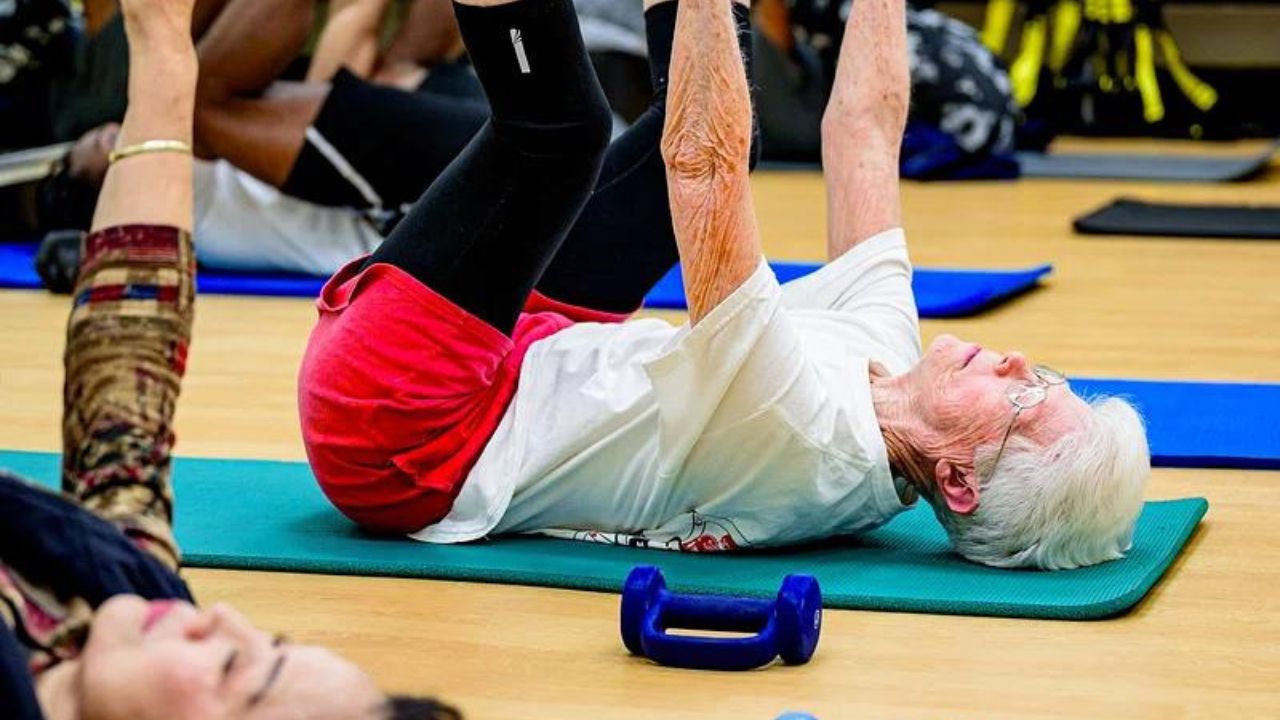
Bicycle Crunches: Lie on your back with your knees bent and hands behind your head. Alternate bringing your opposite elbow to your opposite knee, while extending the other leg.
Incorporate these exercises into your routine to strengthen your core and enhance your dance performance. Remember to breathe deeply and engage your core throughout each exercise.
To enhance your dancing performance, it's crucial to focus on balance and stability.
Incorporating core strengthening exercises into your training routine will help improve your overall stability and control.
Additionally, proprioception training techniques, such as standing on one leg or using balance boards, can enhance your body awareness and coordination, ultimately leading to better balance and stability on the dance floor.
Core Strengthening Exercises
Start by incorporating a few essential core strengthening exercises into your dance routine to improve balance and stability. Your core is the foundation of your body, and having a strong core is crucial for dancers to maintain proper alignment and control their movements.
Here are some effective exercises to target your abdominal muscles and strengthen your back:
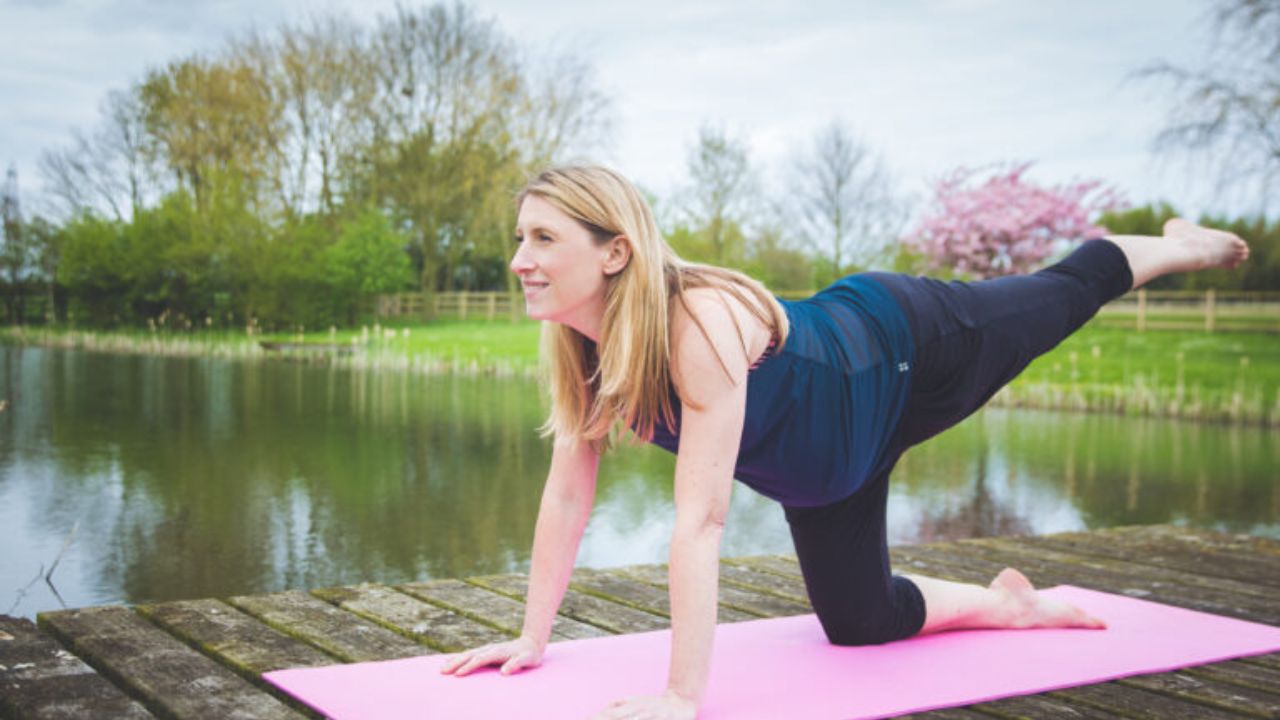
Plank: Get into a push-up position, with your forearms on the ground and elbows directly under your shoulders. Engage your core and hold this position for 30 seconds to 1 minute.
Russian twists: Sit on the floor with your knees bent and feet flat on the ground. Lean back slightly, keeping your back straight. Hold a weight or a medicine ball with both hands and twist your torso from side to side, touching the weight to the ground on each side.
Superman: Lie face down on the ground with your arms extended in front of you. Lift your arms, chest, and legs off the ground simultaneously, engaging your back muscles. Hold this position for a few seconds before lowering back down.
Bicycle crunches: Lie on your back with your hands behind your head and legs lifted off the ground. Alternate bringing your right elbow towards your left knee while extending your right leg, then switch sides.
Incorporating these core strengthening exercises into your dance routine won't only enhance your balance and stability but also improve your overall dancing performance. Remember to always listen to your body and start with proper form and technique.
Happy dancing!
Proprioception Training Techniques
Improve your dancing performance by incorporating proprioception training techniques, such as balance and stability drills, into your routine. Proprioception refers to the body's ability to sense its position and movement in space. By enhancing your proprioception, you can improve your balance, coordination, and overall stability, allowing you to execute dance movements with precision and grace.
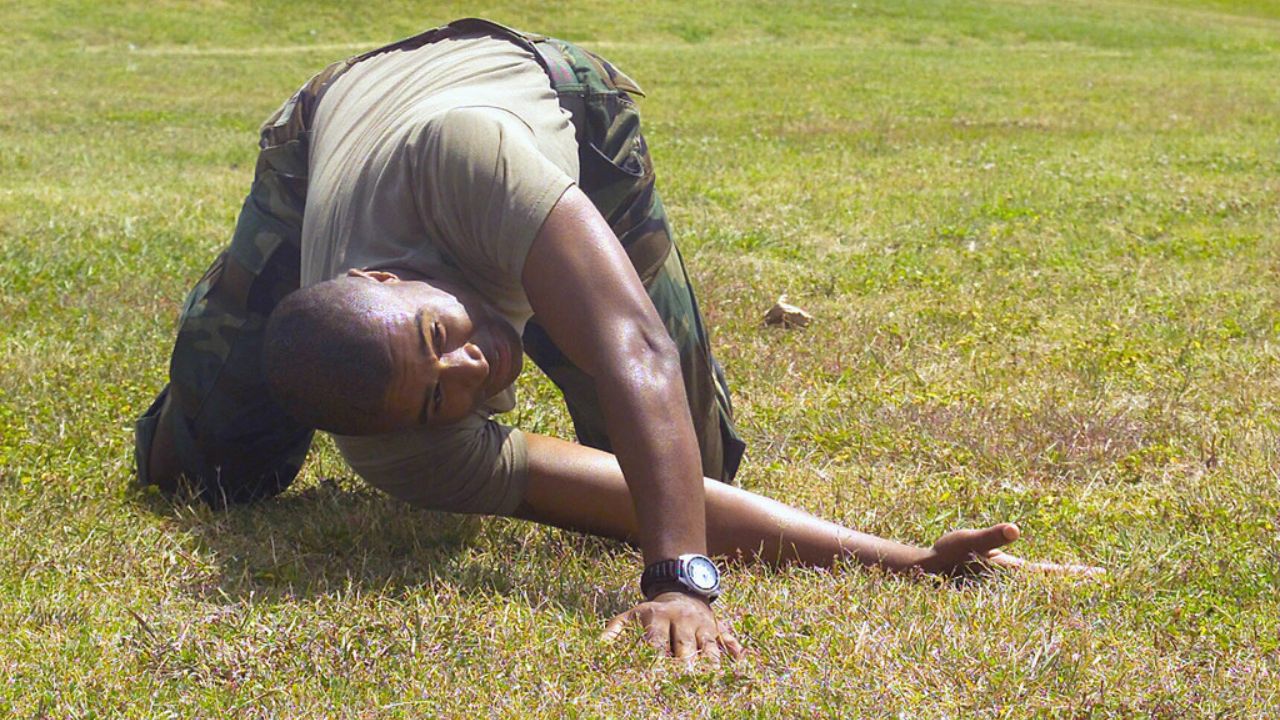
One effective proprioception technique is the single-leg balance exercise. Stand on one leg and focus on maintaining your balance for as long as possible. This exercise not only strengthens your leg muscles but also trains your body to adjust and stabilize itself.
Another beneficial technique is the use of balance boards or wobble boards. These devices challenge your balance by creating an unstable surface, forcing your body to engage its proprioceptive system to maintain stability.
Incorporating these proprioception techniques into your training can have numerous benefits. Not only will you become more aware of your body's position and movements, but you'll also develop better control and stability, reducing the risk of injury and enhancing your dancing performance.
Joint Mobility Exercises to Prevent Injuries
Keep your joints healthy and flexible with these essential mobility exercises. By incorporating joint mobility exercises into your routine, you can prevent injuries and maintain optimal performance.
Here are four exercises that will help you improve your joint mobility and reduce the risk of injuries:
Ankle Circles: Stand tall and lift one foot off the ground. Rotate your ankle in a circular motion, first clockwise and then counterclockwise. Repeat on the other foot.
Shoulder Rolls: Stand with your feet hip-width apart. Roll your shoulders forward in a circular motion, then reverse the direction. This exercise helps to improve shoulder mobility and prevent stiffness.
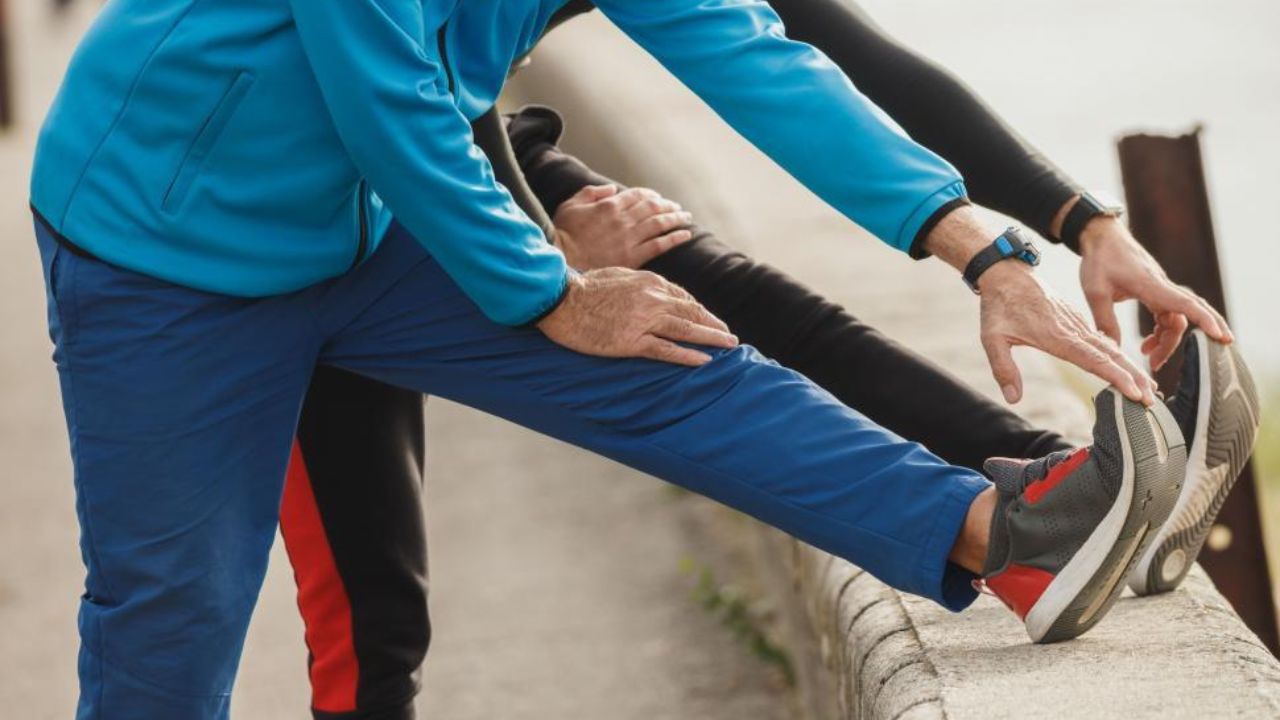
Hip Circles: Stand with your hands on your hips. Make circular motions with your hips, first clockwise and then counterclockwise. This exercise improves hip mobility and flexibility.
Wrist Flexibility: Extend your arm in front of you and bend your wrist back and forth. Switch arms and repeat. This exercise helps to increase wrist flexibility and prevent injuries.
Incorporating these joint mobility exercises into your warm-up routine will help you maintain healthy and flexible joints, reducing the risk of injuries and allowing you to move freely and confidently while dancing.
Incorporating Proprioceptive Training Into Your Warm-Up Routine
To maximize your warm-up routine, it's essential to incorporate proprioceptive training.
Proprioception, or the body's awareness of its position and movement in space, plays a crucial role in dance technique and injury prevention.
By including proprioceptive exercises in your warm-up, such as balancing on one leg or performing controlled movements with your eyes closed, you can improve your balance, stability, and overall body control.
These exercises challenge your muscles and joints to work together, enhancing your dance performance and reducing the risk of injury.
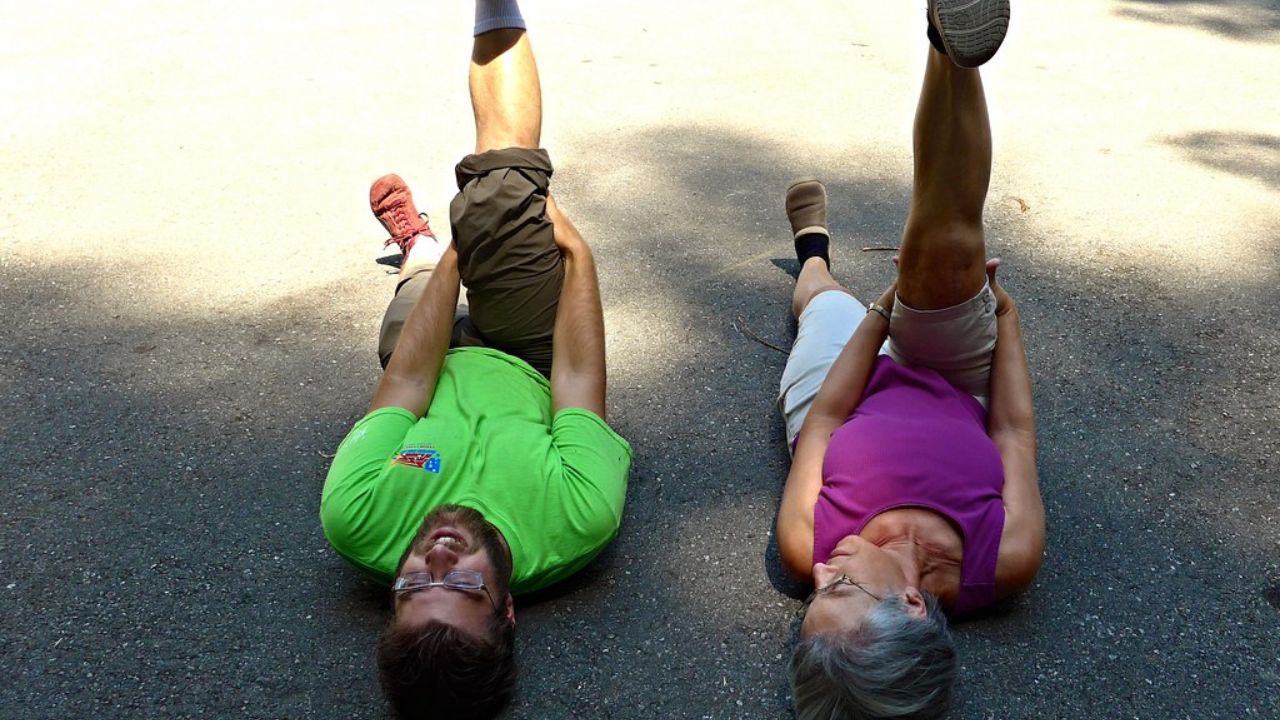
Benefits of Proprioception
First, incorporate proprioceptive training into your warm-up routine to enhance your body awareness and control. Proprioception, or the ability to sense the position and movement of your body, plays a crucial role in dance. By incorporating proprioceptive exercises into your warm-up routine, you can experience the following benefits:
Improved coordination: Proprioceptive training helps you enhance your coordination skills by improving the communication between your muscles and brain. This leads to smoother and more precise movements during your dance routine.
Enhanced body awareness: Proprioception allows you to have a better understanding of your body's position in space. This heightened body awareness helps you maintain proper alignment, prevent injuries, and execute dance movements with grace.
Increased stability: Proprioceptive training strengthens the muscles around your joints, improving your stability and balance. This stability is essential for executing complex dance moves and maintaining control during fast-paced routines.
Injury prevention: Developing proprioception can help reduce the risk of dance-related injuries by enhancing your body's ability to react quickly and adapt to changes in movement.
Incorporating proprioceptive training into your warm-up routine won't only enhance your dancing skills but also give you the freedom and confidence to express yourself fully on the dance floor.
Effective Proprioceptive Exercises
You can incorporate various effective proprioceptive exercises into your warm-up routine to improve your body awareness and control as a dancer.
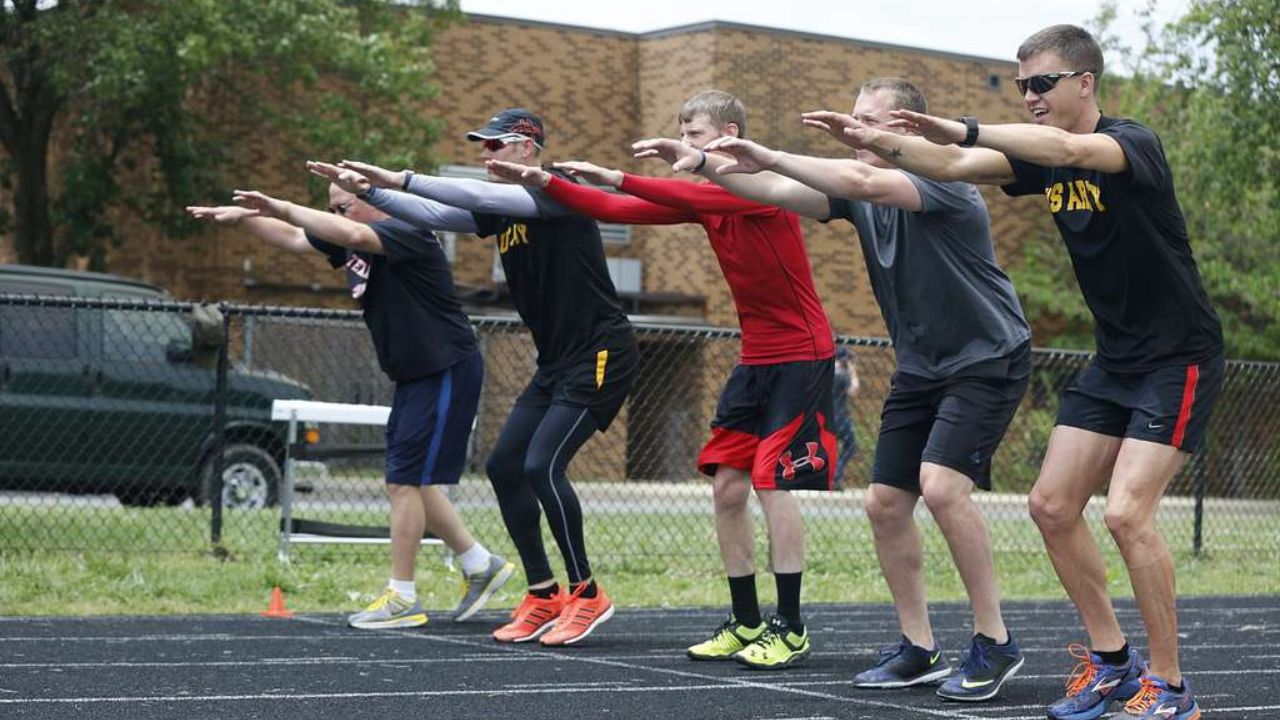
Proprioceptive training benefits dancers by enhancing their ability to sense the position, movement, and balance of their bodies. This type of training helps dancers develop a strong mind-body connection, allowing them to move with precision and grace. It also plays a crucial role in injury prevention, as it helps dancers maintain proper alignment and stability while performing complex movements.
Some proprioceptive exercises that you can include in your warm-up routine are single-leg balance exercises, such as standing on one leg with your eyes closed, and dynamic balance exercises like single-leg squats or lunges on a stability ball. These exercises challenge your body's proprioceptors, improving your overall coordination and stability as a dancer.
After dancing, it's important to focus on cooling down and stretching your muscles to prevent injury and promote recovery. Here are some post dance recovery tips to help you optimize your cool-down routine:
Take a moment to rest: Allow yourself a few minutes to sit or lie down, giving your body a chance to recover and relax.
Stretch it out: Perform gentle stretches to help lengthen and relax your muscles. Focus on the areas that feel tight or worked during your dance practice or performance.
Hydrate: Replenish your body by drinking plenty of water. Dancing can be physically demanding and it's important to stay hydrated.
Reflect and relax: Take some time to reflect on your dance session and give yourself permission to unwind. Whether it's through deep breathing, meditation, or listening to calming music, find a relaxation technique that works for you.
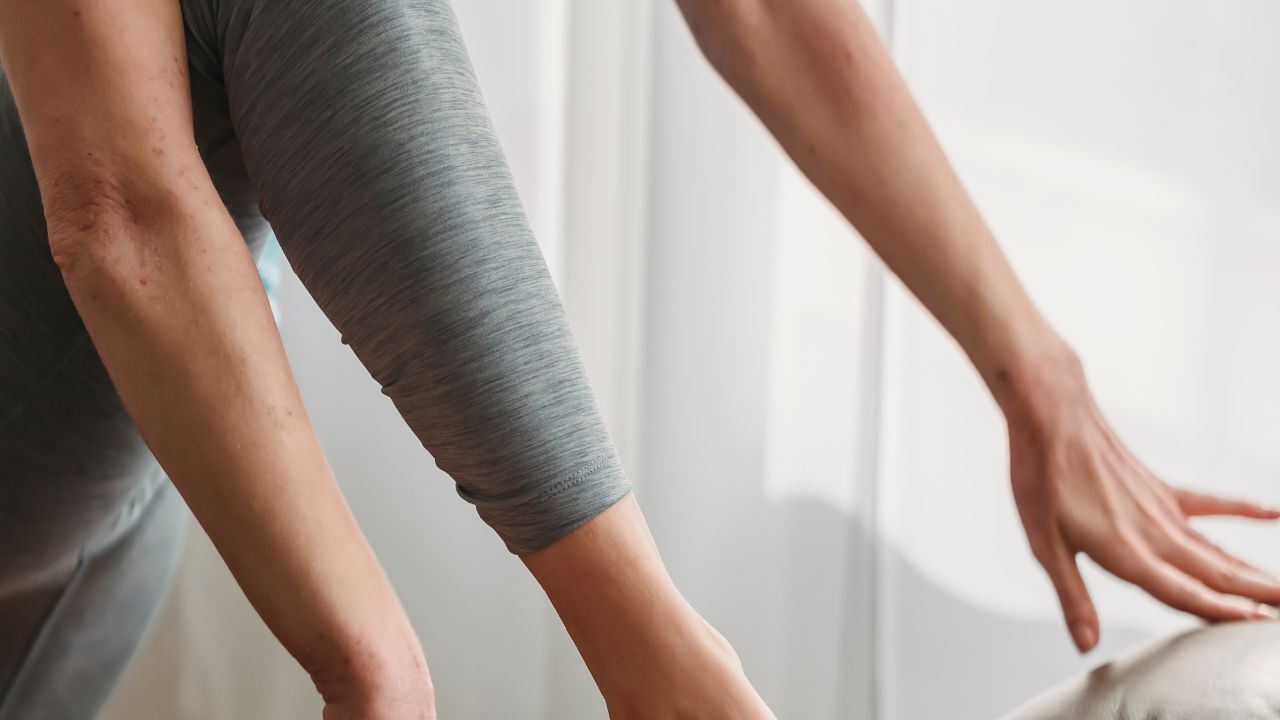
Frequently Asked Questions
What Are Some Common Mistakes to Avoid When Warming up and Stretching as a Dancer?
To avoid common mistakes when warming up and stretching as a dancer, ensure you maintain proper form and don't rush through the process. Taking the time to do it right will help prevent injuries and improve your performance.
To achieve peak performance and prevent injuries, it is crucial for dancers to prioritize proper warm-up and stretching. The ideal duration of warm-up and stretching before practice or performance depends on individual needs and goals.
Are There Any Specific Warm-Up Exercises or Stretches That Are Recommended for Dancers With Existing Injuries?
To prevent further injury and ensure a safe warm-up, it's crucial for dancers with existing injuries to modify their warm-up routine. Incorporate specific warm-up modifications and injury prevention strategies to protect and support your body.
Can Incorporating Yoga or Pilates Into a Warm-Up Routine Benefit Dancers?
Incorporating yoga or pilates into your warm-up routine can greatly benefit dancers. These practices improve flexibility, strengthen core muscles, and enhance balance and body awareness, leading to improved performance and reduced risk of injury.
You should cool down and stretch after every dance practice or performance, not just on intense training days. This helps prevent injury, promotes flexibility, and aids in muscle recovery. Make it a regular part of your routine.
 Mobility trainingHome Fitness RecoverySports Injury PreventionPersonal Physical TherapyOrthopedic SolutionsPrivacy PolicyTerms And Conditions
Mobility trainingHome Fitness RecoverySports Injury PreventionPersonal Physical TherapyOrthopedic SolutionsPrivacy PolicyTerms And Conditions
